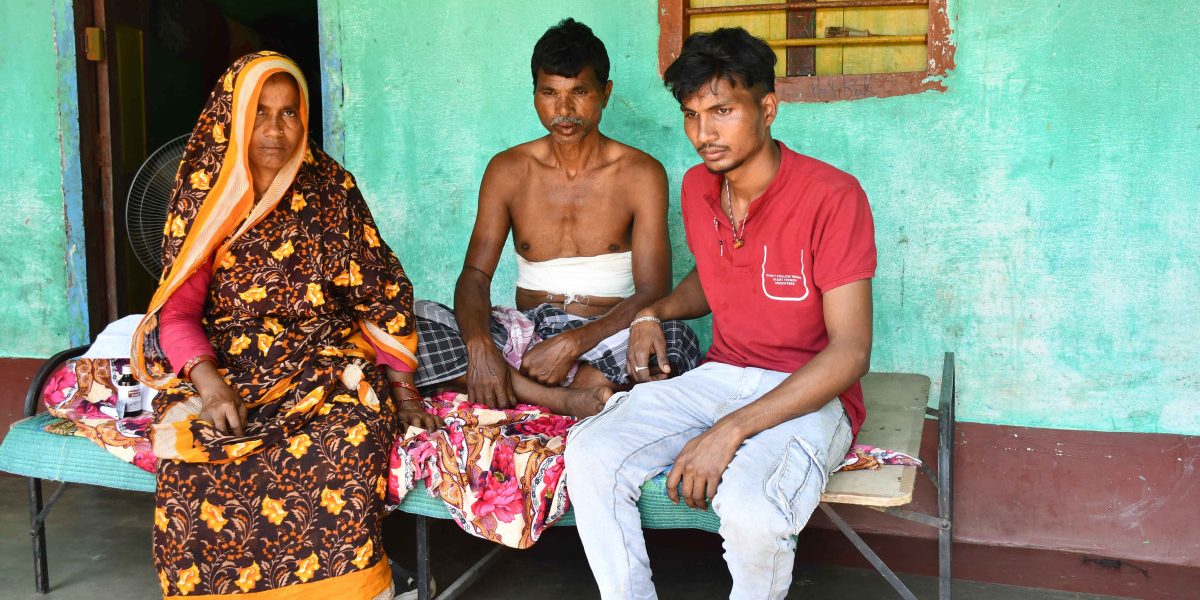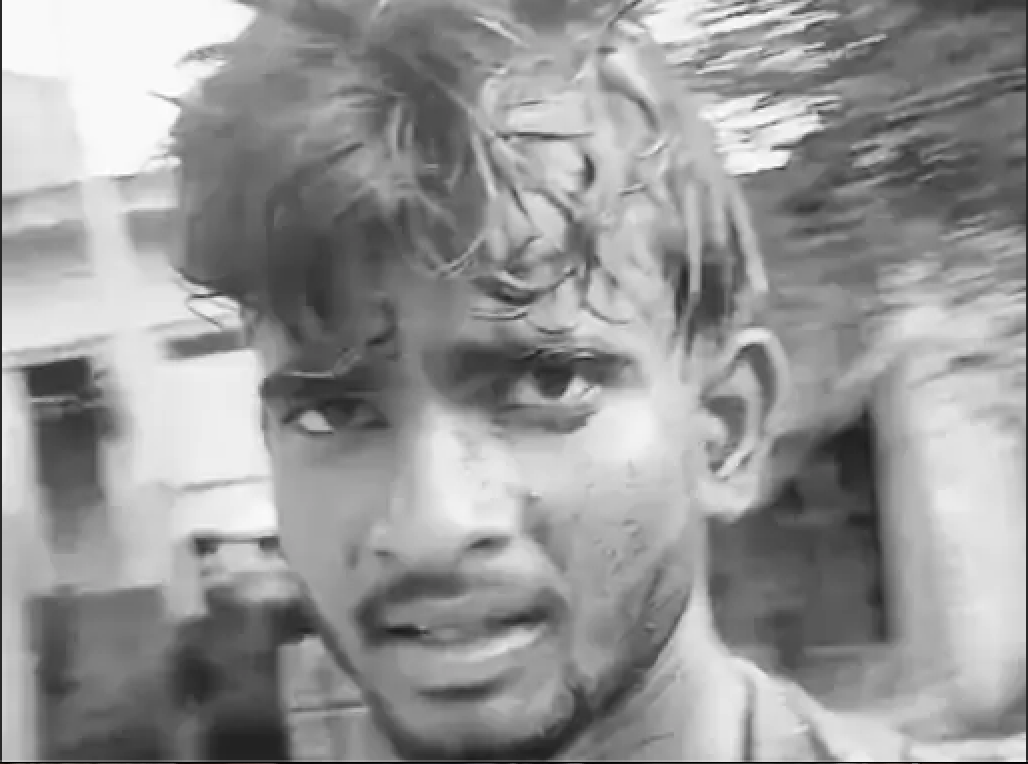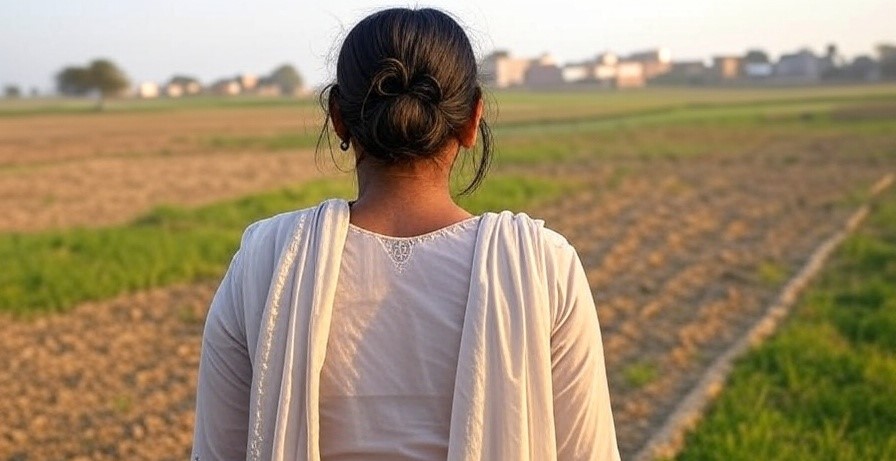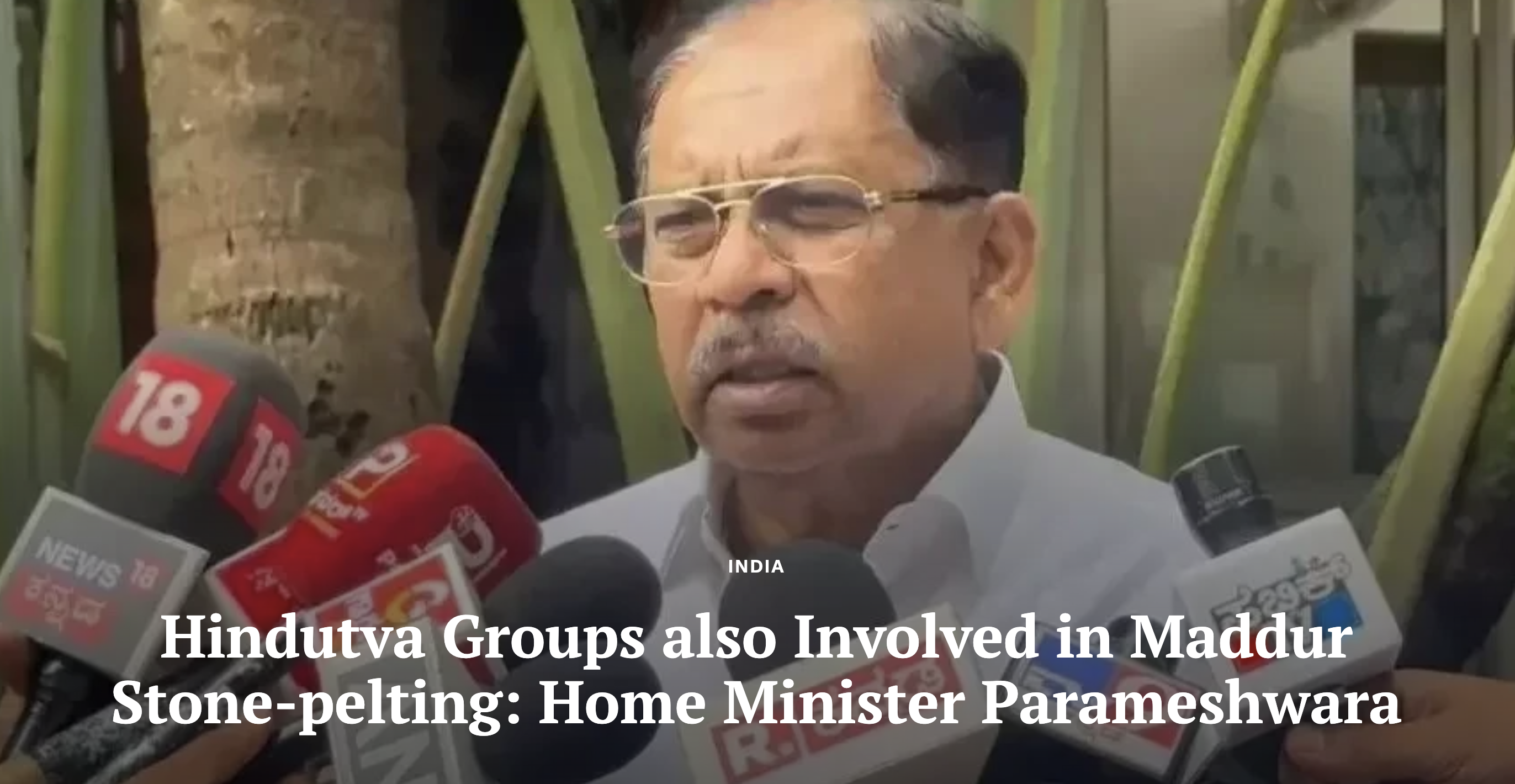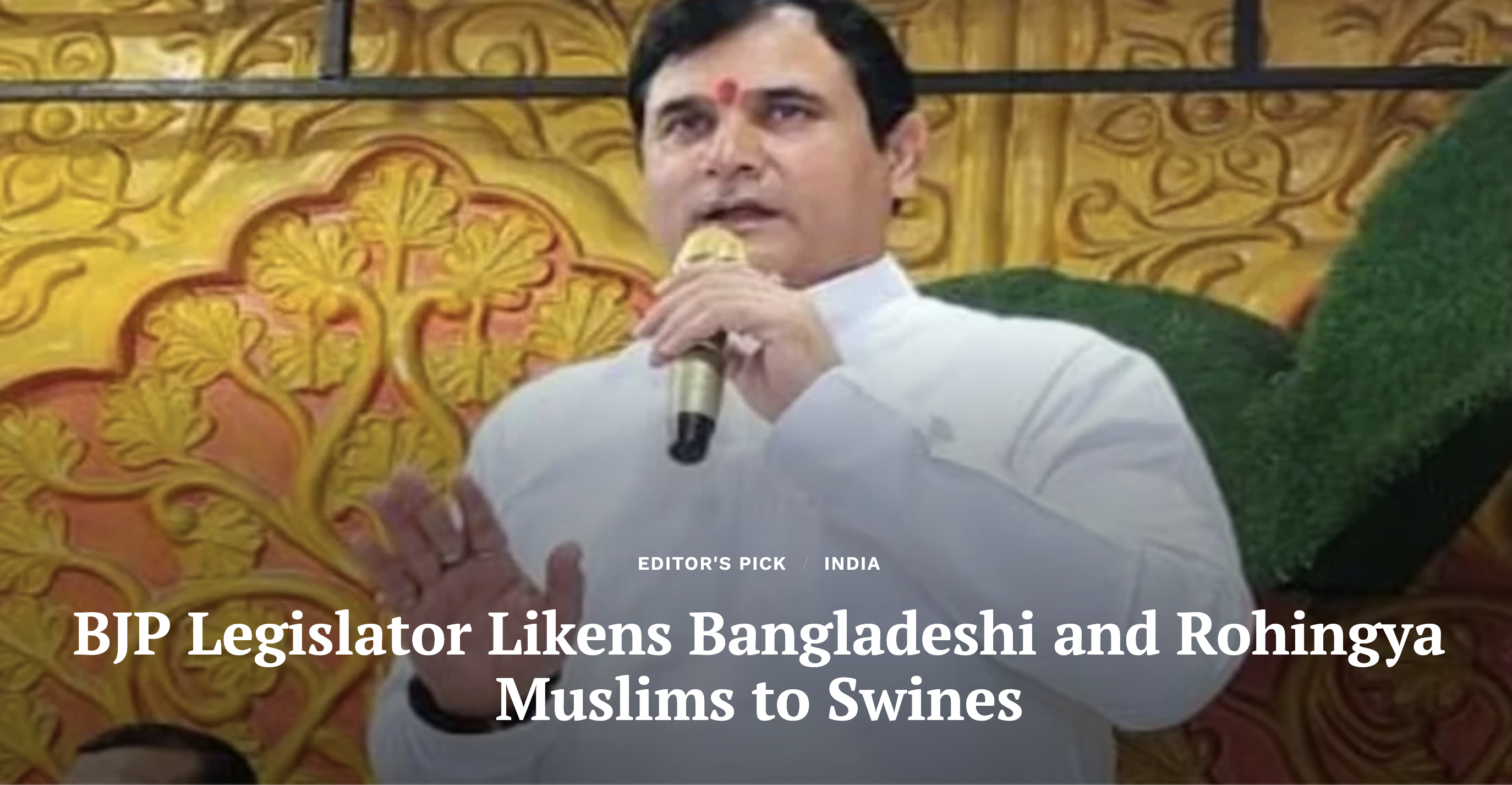
Shimla: On 14 December, 2021, farmer Naved Ali, 54, was doing household chores when men from the electricity department of the Himachal Pradesh government came to his two-room concrete home on the edge of a pasture in the mountains and wrenched out the electricity meter.
The men said they had been sent by the local administration, which told their department that Ali, like 42 other families from a local Muslim tribe of shepherds and farmers called the Gujjars, were illegally occupying the land and had been served eviction notices.
Ali said he showed the men the title to his land, issued 21 years ago in 2001 by the patwari (a government official who is the repository of village land records); in other words, by the same government that issued his land deed.
“But they removed the meter and said go to the revenue department,” said Ali. “The revenue department said my land falls under uncultiveable wasteland and said I could not stay there since it belonged to the government.”
For two days, Ali lived without electricity. Light came from his inverter, but he could not run the motor that ran a machine that dried crops into fodder. The electricity was restored five days later, after a local court stayed the eviction orders.
Vishal Sharma, an electricity department engineer at Indora, said their job was limited to “uprooting” electricity meters in premises the revenue department deemed “illegal”.
“We do not have the authority to look at a land deed,” said Sharma. “He (Ali) might have a proper land deed, but he needs to prove it to the revenue department.”
“The land you are living in is the government’s land,” read the eviction notice sent to 83 families, about half from a Hindu tribe. “You need to leave the place as soon as possible otherwise the property will be razed, the responsibility of which is on you.”
Five days before Ali lost his electricity, a Gujjar shepherd called Rehum, 37, who only uses his first name, said men from the Vishwa Hindu Parishad (VHP), a Hindu-fundamentalist group, attacked Gujjars with sticks, repeating the attack on 13 December.
“They said the place belonged to them, and we should leave,” said Rehum. “They said, if we did not, they knew how to make us leave.”
On 15 February, after the eviction notices had been served and stayed, the VHP showed up, said Rehum, at his home and burnt an adjoining wooden shed in which he stored fodder. He had suffered, he said in his complaint to police, losses of Rs 50,000, one of four other Gujjar properties burnt.
Rehum said he identified and named two of five attackers. The police, who registered a case but made no arrests, said they were “investigating” and would prepare a report.
The violence and hostility were new to Ali, Rehum and about 3,000 other Gujjars in Indora, who have lived peacefully for “centuries”, they said, alongside Hindus in the tehsil or subdivision of Indora in Kangra district, 273 km north of state capital Shimla.
The Gujjars are one of India’s many so-called socially or economically disadvantaged “scheduled tribes”, accorded special Constitutional protection.
Himachal’s Gujjars—who do not follow many orthodox Islamic practices, such as hijabs for women and praying five times a day—were notified as a scheduled tribe 55 years ago in 1966.
“We are tolerant,” said Ali Mohammad, a Gujjar dairy cattle farmer. “[Yet] we are also facing similar issues as other Muslims in this country.”
The ripping out of electricity meters and burning of cow sheds are part of a campaign launched against the Gujjars of Indora on the instigation of the VHP, which alleged a “land jihad”—an unsubtantiated trope often used by Hindu extremists and media that support them—via encroachments on pastures.
The proportion of Hindus in Himachal is higher than most Indian states: 95.17% Hindu and 2.18% Muslim. Only 3.99% of Indora’s population is Muslim, and Gujjars, comprise no more than 1.39% of Himachal’s population, their largest concentration in Kangra.
The local administration refuted the VHP’s allegations, but began investigating the Gujjars and issuing eviction notices anyway, the latest evidence, said observers, of how the Bharatiya Janata Party (BJP) government of chief minister Jai Ram Thakur is succumbing to concerted campaigns against Muslims over the last three years by Hindu fundamentalists.
“We have lived in peace and harmony with the Hindus until recently when these Hindu groups came in and destroyed everything,” said Ali.
Anti-Muslim Campaign Begins With A Dead Cow
The excuse that the VHP used to try and rally Hindus against the Gujjars was the discovery of a dead cow—cow slaughter has been banned in Himachal since 2010—on 9 December near a village called Surdwan in Indora tehsil.
It appeared apparent that the campaign against the Gujjars had been planned earlier: 9 December was also when the VHP first told Gujjars to vacate their homes and land.
In Surdwan, the VHP alleged, with no evidence, that Gujjars had killed the cow.
“Hindus consider cows as mothers,” Indora VHP leader Sunil Dutt told Article 14. “No Hindu can harm a cow. Muslim Gujjars are behind the killing.”
“We are not targeting a religion,” said Dutt. “But the place where this cow was found dead is the same place where one of our shivlings was found broken a few months ago, so this is only done by Muslims.”
The cow had injuries, but a postmortem revealed it had not been slaughtered, and the injuries, police said, could have been inflicted by a predator.
“The postmortem report has clarified that the cow died a natural death,” said K C Sharma, Kangra’s superintendent of police. “The injuries could be due to predators or other wild animals.”
Unconvinced, the VHP demanded the eviction of Gujjars from the area. “Even if the cow died of natural causes, the external injuries have been caused by Muslims,” said Dutt. “Muslims want to disrupt the peace and harmony of the area and should be sent out.”
That line of argument may sound illogical and the demand illegal, but the administration promised the VHP that their officials would indeed investigate if the Gujjars were living in Indora illegally and would be evicted if they were.
“This is to pacify all the Hindus of the area,” said Sharma. “We did not want any big riots in Indora. So, to maintain peace, it was necessary.”
The police went a step further and filed cases of encroachment against the Gujjars. An investigation was underway, said Sharma.
After investigations into ownership of land began, eviction notices were served on 83 families, about half of them Gujjar. The rest were mostly Hindu tribals called Gaddi.
But these notices were served in violation of India’s Constitution and forest law, which confers residential rights on scheduled tribes living on forest land or grasslands or “waste land” designated as forest.
An Eviction Process Not Backed By Law
Land deeds held by many Gujjars indicated that the government had served eviction notices on many to whom it had issued land deeds, such as Naved Haq, a Gujjar, who got his title 20 years ago, after buying the land from a Hindu Gaddi tribal.
Manshi Asher, a member of an advocacy group called the Nagrik Adhikar Manch (Citizen’s Rights’ Forum), Kangra, described the eviction orders as “shocking”, given that Gujjars were an ST community, protected by the Constitution.
“The chief minister in a recent meeting with the Gujjar Kalyan Board [Gujjar Welfare Board] promised to work for the welfare of the Gujjar people, and instead of supporting them in strengthening their livelihood, they are being cornered,” she said. “This goes against the promise made, and it is against our constitutional values and state policies.”
Lawyers pointed out that even if anyone from a scheduled tribe did not have a title deed, the The Scheduled Tribes and Other Traditional Forest Dwellers (Recognition of Forest Rights) Act, 2006 (FRA in short), gave them the right to live on land deemed to be forest.
In section 4(5), the FRA states that no member of a forest-dwelling scheduled tribe or “other traditional forest dweller” shall be ejected or removed from the forest land under her occupation till a “recognition and verification procedure” is complete, a point reiterated by the BJP government of Prime Minister Narendra Modi in Parliament in 2019.
“A notification was issued in Himachal in 1952 according to which all wasteland was declared as forest land,” said Abhishek Mintu, a lawyer. “The fact that they had been living on the land for decades, said Mintu, also allowed them, under the FRA, to stay there as scheduled tribes.
Madan, the revenue department official quoted previously, said that the waste land many Gujjars occupied was classified as charagah bila drakhtan (waste land for animal grazing), gair mumkin (uncultivable waste land) and banjar qadim ( land that has remained fallow for eight or more consecutive harvests), which “cannot be occupied by any tribe”.
But Madan was quoting a lapsed government order.
In 1952, as Mintu said, the Himachal forest department included wastelands in forest land. In 1998, the forest department said in a notification that areas clarified as gair mumkin and charagah bila drakhtan in revenue records were not included in ‘waste lands.’
However, in 2003, the forest department rescinded the 1998 notification of 1998 and brought back the land back into the ambit of forest land.
In 2019, the issue of wasteland as forest land was debated in a case called Rajesh Kumar versus State of Himachal Pradesh & Ors. But the regional office of the ministry of environment, forest & climate change observed that the land was indeed forest land.
There are other Constitutional protections and a law protecting scheduled tribes that the State appears to be violating in attempting to evict the Gujjars, as we detail later, but the prime motivating factor is linked, said experts, to the attempts to introduce Hindutva in a State where the BJP’s hold on power is uncertain.
The Rise Of Hindutva In Himachal Pradesh
In November 2017 the BJP returned to power, ending a five-year term of the Congress party—both parties have run the state for a decade each over the last 20 years—running a campaign on issues of crime, corruption and development.
There was no mention in the campaign of issues related to Hindutva, the militant Hindu philosophy aimed at Hindu dominance and minority subservience.
Himachal is India’s seventh-most literate state with a literacy rate of 86.6%, “The BJP can play the Hindutva card in Gujarat, but elections in Himachal are influenced by different issues,” said Harish K Thakur, a political science professor at Shimla’s Himachal Pradesh University, Shimla.
But a Hindutva agenda became apparent after 2017.
In 2018, some right-wing Hindu groups, including the VHP, launched a campaign to change the name Shimla to Shyamala. VHP functionary Aman Puri reportedly claimed that Shimla was originally called Shyamala but as the English found it tough to pronounce, they renamed it Simla, which later became Shimla.
In December 2018, some Hindu groups damaged shops belonging to Muslims in Shimla district after the head of a cow was found in the area. National media reports said some Muslims fled in fear after the attacks.
Over the past three years, the VHP and other Hindu groups have launched concerted campaigns claiming Muslims were carrying out a land jihad and a love jihad, the false notion of a Muslim plot to marry and convert Hindu women to Islam.
Several mosques and mazaars have been vandalised in the state by Hindutva groups since. In the latest incident in January 2022, masked men from the Hindu Jagaran Manch (HJM) destroyed a Muslim shrine in the town of Nahan in Sirmaur district.
In a now-deleted Facebook post, Kamal Gautam, general secretary of the Himachal Pradesh HJM, wrote: “Will free every corner of the Devbhoomi [holy land]. Will eradicate the (sic) land jihad from Devbhoomi. Listen Aurangzeb’s illegitimate children, wherever you go in Devbhoomi you will find Shivaji standing against you.”
The reference to Aurangzeb’s children was to Muslims, and the reference to the Hindu emperor Shivaji was to Hindus.
This was not the first time Kamal had vandalised a shrine.
In 2020, Kamal’s associates demolished a mazaar in Himachal’s Sirmour district. Kamal tweeted a video of the destruction and said: “HJM Sirmour Team today uprooted an illegal majar [sic] constructed by Islamic jihadis under their land jihad agenda at Nahan. Jihadis were trying to encroach this precious prime land near medical college Nahan. Well done boys @hjmhpofficial.”
Kamal tagged controversial BJP functionary Kapil Mishra and hospitality entrepreneur Meenakshi Sharan, who is associated with Ayodhya Foundation, a “non-profit dedicated to the cause of Indian art, cultural heritage and civilisation”.
The police have taken no action against Kamal, saying instead that the shrine located near the medical college in Nahan town of Sirmaur district was illegal.
“There are very few Muslims in the state,” said Vishal Sharma, an assistant professor in Shimla’s Himachal Pradesh University. “But the Hindu groups are going after whoever is available.”
Himachali Muslims include Gujjar tribes and a few migrants from other states in search of employment, many of whom are porters or garbage collectors,” said Vishal Sharma.
“We have seen how these Hindutva groups are going after the Gujjar tribe to create a fear among the local population about them (the Gujjars),” said Vishal Sharma, who added the only goal of such groups was “creating polarisation and winning votes” in the upcoming 2022 assembly elections.
Sharma reasoned that over the last 37 years, no party has dominated the elections, with voters jettisoning politicians they perceived as not working as they should.
“The BJP’s work was not up to the mark, so they are trying to create these fake narratives,” said Sharma, pointing to the BJP’s four bypoll losses in 2021 as possible incentive to up the Hindutva ante.
“With nothing else on the platter,” said Sharma. “They are now serving pure hate.”
VHP Plan: Gaushalas On Gujjar Land
Dutt from the VHP alleged that Gujjar tribes in Indora had illegally encroached on grasslands in the area, alleging what he called “land-jihad”.
The VHP claimed the land was meant for cow grazing and gaushalas or cow shelters. After the Gujjars were evicted, the VHP said, they planned to set up a cow shelter in the high pastures.
“The land is the bone of contention in this case,” said Sharma, the police superintendent. “There is discontent that Gujjars have illegally encroached upon the land.”
The Gujjars said they had lived on the land in question for more than half a century. “No one has said anything about this before,” said Hanif Bhai, a local Gujjar who had been served an eviction notice.
“We have made our houses here,” said Hanif Bhai. “We can not leave this land. Where will we go after leaving? We put our life’s earnings into making houses here.”
The VHP’s Dutt said that they would not rest until the eviction was completed.
“The Muslims in the area are encroaching the land of Hindus and cows,” said Dutt. “This is land jihad. They want to turn all the waste land into Muslim land. “We will not let that happen.”
An official of the revenue department said the land could not be given over to cattle. “There is no land that is meant for cows,” said Mandan Lal, a revenue department collector. “But still, we have sent notices to 83 people to vacate government land.”
Murid Hussain, chairman of the Himachal Pradesh Wakf Board and a local Gujjar leader, said the VHP was attempting to break a peace between Hindus and Muslims that had never before been broken.
“There has been complete brotherhood in the area for centuries,” said Hussain. “This is just a step to break that harmony… I don’t know where this land-jihad term came from.”
Shield from Indian Constitution
As we said, it isn’t just the FRA and its own assurances that the state government is violating in launching the Gujjar evictions. It is also going against protections available under the Constitution and a special law to safeguard scheduled castes and tribes.
Article 342 of the Indian constitution defines scheduled tribes and specifies who is a tribe or tribal community. Article 46 of the Indian constitution requires the State “to promote with special care the educational and economic interests of the weaker sections of the people, and, in particular, of the Scheduled Castes and the Scheduled Tribes, and shall protect them from social injustice and all forms of exploitation”.
In addition, the ‘Right to fair compensation and Transparency in Land Acquisition, Rehabilitation and Resettlement Act (LARR Act) 2013 says land cannot be acquired or land-use altered in scheduled areas under the fifth schedule to the Constitution without prior consent of the concerned gram sabha or the panchayat.
“The panchayat was not consulted before sending the notices,” said Aziz Mohammad, subhead of the Nurpur gram panchayat in Indora. “This is complete ignorance of rules. Neither are they safeguarding forest land of scheduled tribes, a right given by the Indian Constitution, nor are they abiding by other rules that safeguard tribal people.”
Not Just About Land
The tribes of Indora should also have been protected by the police against VHP intimidation and violence in general but particularly because of the Scheduled Castes And Scheduled Tribes (Prevention of Atrocities) Act 1989, the SC/ST Act in short, a law meant to prevent offences against historically disadvantaged people.
A tribal affairs ministry press release from 2019 reminded state governments of the law: “Wrongfully dispossessing members of scheduled castes or scheduled tribes from their land or premises or interfering with the enjoyment of their rights, including forest rights, over any land or premises or water or irrigation facilities or destroying the crops or taking away the produce therefrom amount to the offence of atrocities and are subject to punishment under said Act.”
Instead, as Mohammad, subhead of the Nurpur gram panchayat said, tribals have been repeatedly attacked or threatened over the last two years, with no punitive action against the attackers. As recently as 9 February, he said, Gujjar crops worth about Rs 100,00 were burnt by Hindu extremists.
“Instead of saving us, the administration is safeguarding the people responsible for all of this,” said Mohammad.
Asked about the SC/ST Act, Sharma, the superintendent of police, said he would not be able to comment, as the matter was now sub-judice.
Gujjars said their troubles were no longer a tribal issue but a communal issue, since the VHP wanted Muslims to vacate the area.
“We have always enjoyed a great relationship with Hindus here,” said Lal Hussain, a Gujjar. “We are just a handful of people, and our votes don’t matter. In the past, despite being a handful, Gujjars [who stood for election] got votes from Hindus and won elections.”
“They want to get all Hindu votes to win the elections,” said Hussain. “But more than 90% of the local population, including Hindus, are against this.”.
Davinder Mankotia, a local Congress leader, said the VHP attempt to evict Muslims and to disrupt peace was “unacceptable” and demanded “proper action” from the government.
Reeta Devi, the local BJP legislator, said she also stood with the tribes.
“Displacing or evicting Gujjars from the area is not a solution to this issue and is not legally possible,” said Devi. “But the death of a cow is a big issue for Hindus, as Hindus treat cows as mothers. I met the protesting people and promised to look into the matter to pacify them. I assured them that whoever is behind the cow’s death, will be punished.”
This story first appeared on article-14.com


